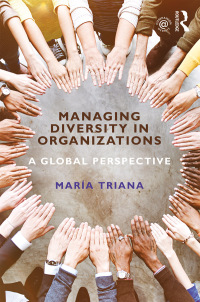The following letter, written by a biracial teenage girl, appeared in the 1968 edition of FaVE! magazine
Question:
The following letter, written by a biracial teenage girl, appeared in the 1968 edition of FaVE! magazine (Nimoy, 1968 as reproduced in Epstein, 2013).
“Dear Mr. Spock, I am not very good at writing letters so I will make this short. I know that you are half Vulcan and half human and you have suffered because of this.” She went on to explain that her mother was Black and her father was White and she felt like she did not fit in with either group because of this. She explained that Black peers “don’t like me because I don’t look like them. The White kids don’t like me because I don’t exactly look like them either. I guess I’ll never have any friends.” F.C., Los Angeles The girl writing this letter was addressing her question to Mr. Spock, a famous character in the Star Trek science fiction television shows and movies.
Mr. Spock was played by Leonard Nimoy. In response to this letter, the magazine printed a two-page reply from Leonard Nimoy giving the girl some wise advice from Mr. Spock. Because Spock was half Vulcan (on his father’s side) and half human (on his mother’s side), he too had faced the challenges of being biracial.
Leonard Nimoy (speaking on behalf of his character, Mr. Spock) explained that the Vulcans formed groups and often demanded that others be just like them in order to be accepted, which is similar to humans who can be prejudiced. He explained that the most important question in his mind was whether he wanted to be popular among the others or whether he wanted to be true to himself. He explained that it takes courage to go out on your own, but often there is a little voice inside each of us that tells us we need to be true to ourselves. Nimoy further stated that there is usually no good reason for picking on or bullying anyone and that just because someone is different does not mean they are worth any less than anyone else. He continued by stating that Mr. Spock could have let the prejudice he faced get him down, but instead he ultimately realized his worth and the fact that he was equal to everyone else. He advised the girl that she could do the same by overcoming the need to be popular and focusing instead on the people who accept her for who she is.
Nimoy closed the letter by providing an example of Mr. Spock, who replaced the idea of being liked with the idea of being accomplished and devoted himself to developing his career and capabilities so that people of all races would recognize his potential as a colleague (Epstein, 2013; Nimoy, 1968).
Today, we have a few prominent examples of individuals who are biracial.
The most prominent is probably President Barack Obama, whose mother was White and whose father was Kenyan. In 1968, the year this letter was published, there were not such prominent examples of biracial individuals, and it was more difficult to navigate this environment. Even today, people form many groupings (or categories) on the basis of demographic characteristics including race, sex, age, religion, and other demographics. These characteristics can lead to both inclusion and exclusion, as we will see in the chapter that follows. For individuals who have membership in multiple categories, this can present both challenges and opportunities.
Discussion Questions:
1. Why do you think people who are biracial may encounter prejudice?
2. Do you think there are any advantages to being biracial?
3. In what ways might biracial individuals have a broader knowledge base and mind-set than individuals who are not biracial?
4. Whose responsibility is it (the self, other individuals, employers, society, no one) to help those who are different in some way to be accepted?
Step by Step Answer:

Managing Diversity In Organizations A Global Perspective
ISBN: 9781138917026,9781317423676
1st Edition
Authors: Triana Maria





